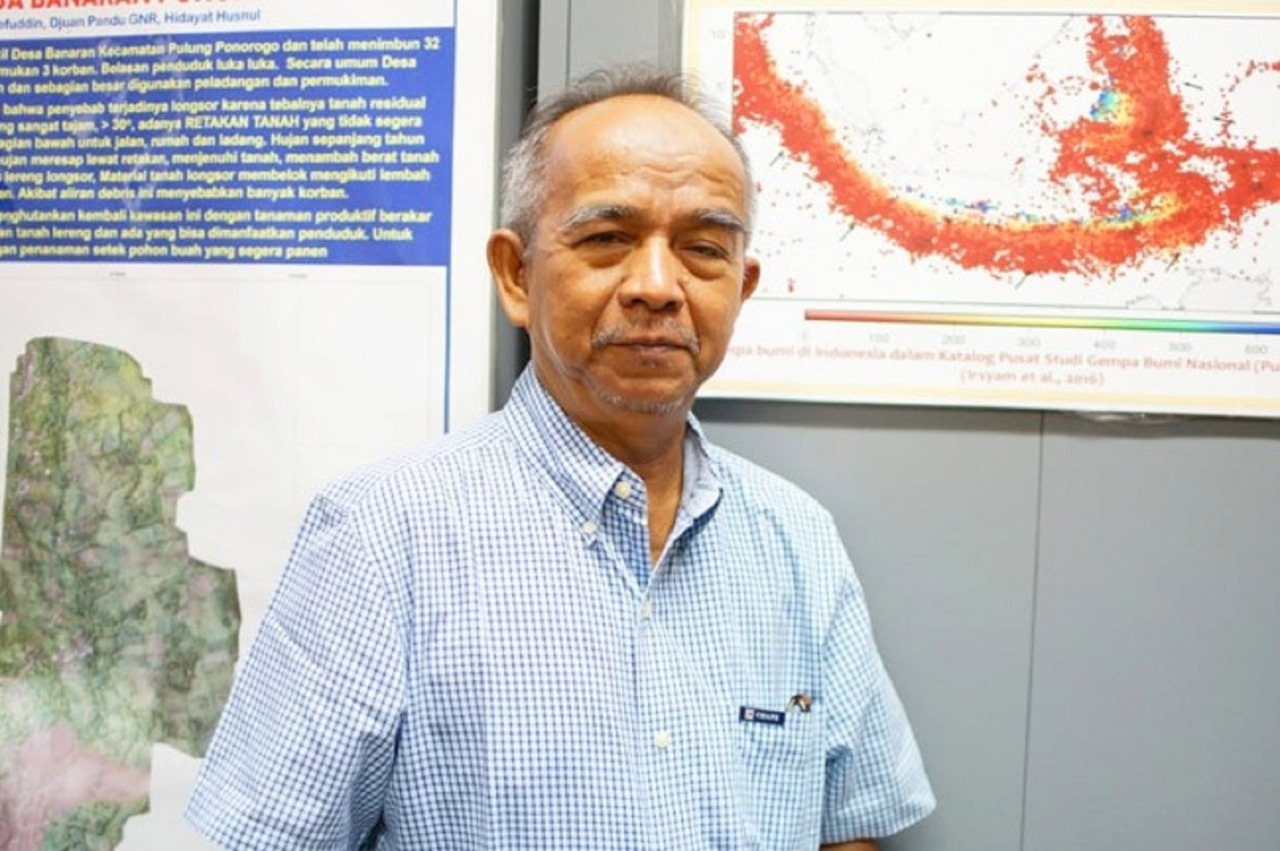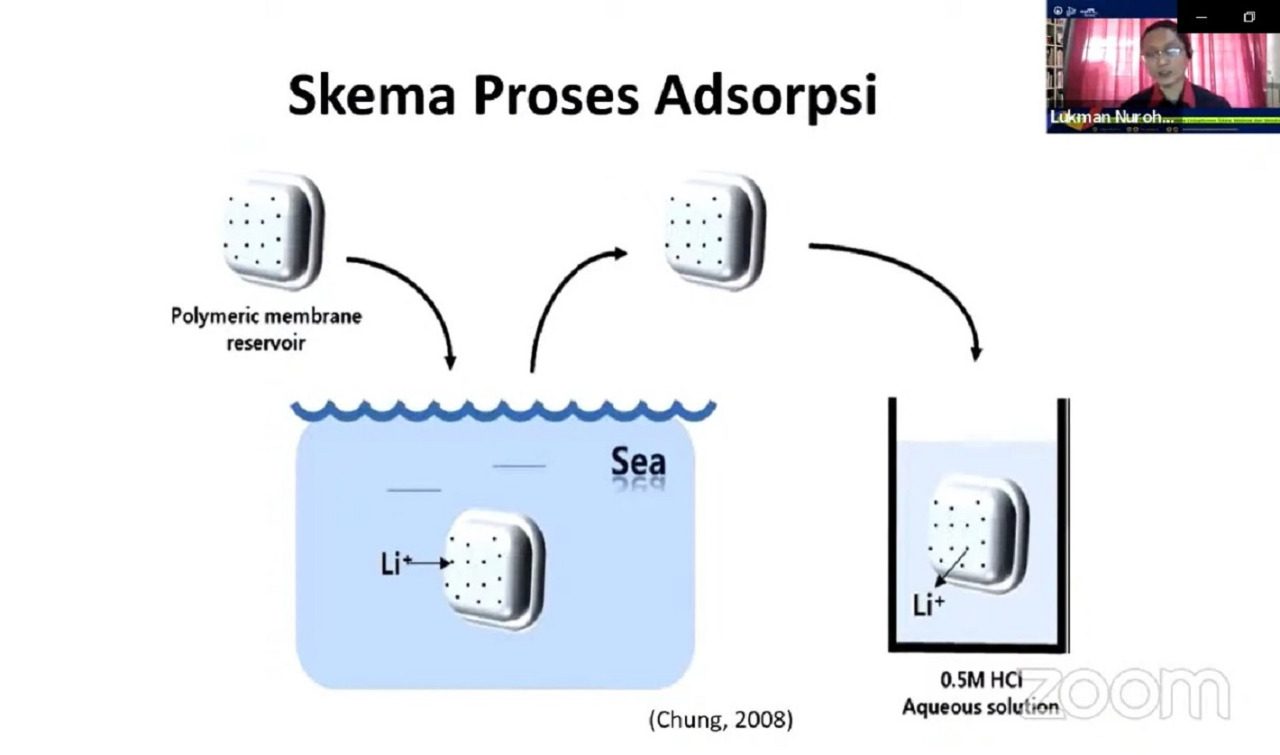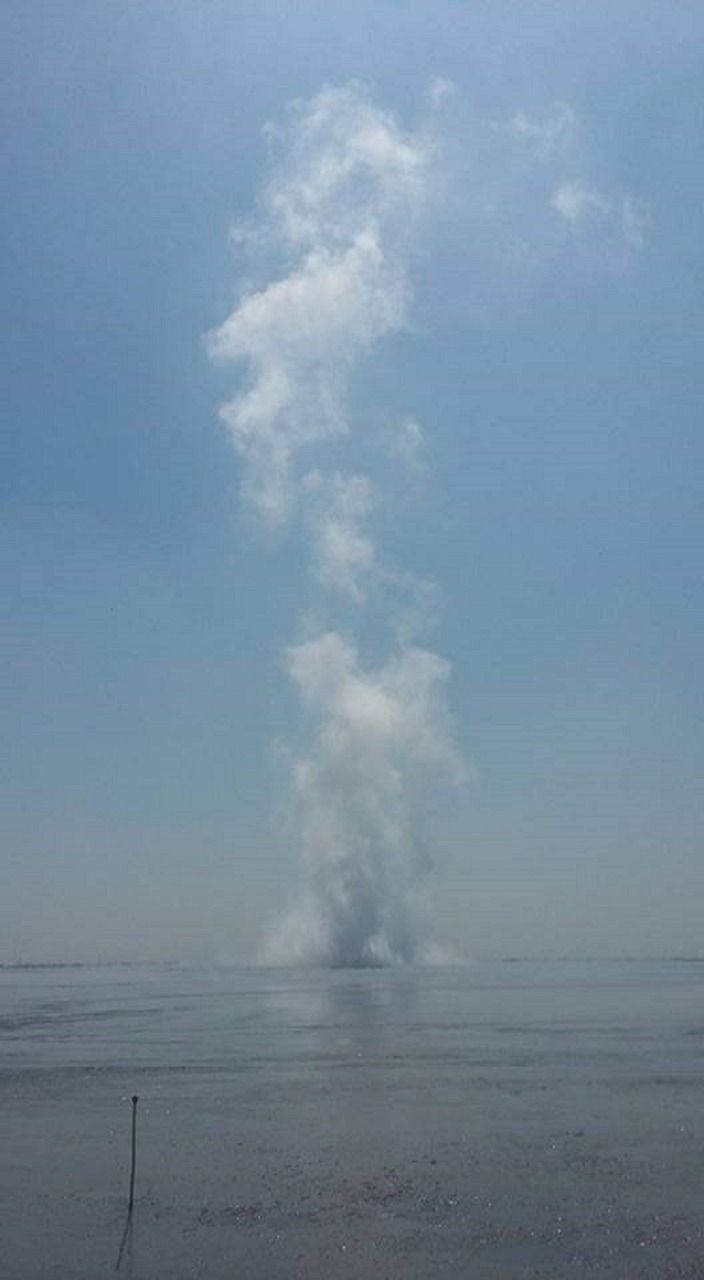ITS Expert: Potential of Green Energy Materials in Sidoarjo Mudflow

Dr. Ir Amien Widodo MSi, a senior researcher from the Research Center for Disaster Mitigation and Climate Change (Puslit MKPI) ITS
ITS Campus, ITS News – Sustainable development makes green energy a world priority. The Government of Indonesia is no exception, which encourages green energy-based industries as an investment policy focus. Indonesia is considered to have great potential because it has a supply of supporting raw materials, one of which is lithium content found in the Sidoarjo mud.
A senior researcher from the Research Center of Disaster Mitigation and Climate Change (Puslit MKPI), ITS Dr. Ir Amien Widodo MSi said lithium is one of the Critical Raw Materials (CRMs). It is critical because it is difficult to obtain and has no substitute but has excellent benefits. The lecturer at the Geophysical Engineering Department also said that this crucial material is indispensable in developing green energy.
Amien said that one of the government’s policies in developing green energy is to accelerate the production of electric vehicles. Mass production of batteries was carried out. Although Indonesia has 25 percent of the world’s nickel reserves as a raw material for making batteries, battery production also requires lithium, which unfortunately has yet to be found in a good mining location. “The discovery of the potential lithium content in the Sidoarjo mud is good news. Of course, it would be great if we could take advantage of it,” he said excitedly.

The schematic of the adsorption process carried out by the ITS team when presented in a webinar.
Furthermore, Amien explained, previously the Earth and Disaster Studies Center (now the MKPI Research Center) ITS has conducted a study of the lithium content in Sidoarjo mud water since 2016. This study was carried out by lithium adsorption from Sidoarjo mud using an adsorbent based on Lithium Manganese Oxide (LMO). This adsorbent has a spinel crystal structure capable of absorbing lithium. This study shows lithium content at 7 to 15 parts per million.
A similar study was also conducted by the Geological Agency of the Ministry of Energy and Mineral Resources (ESDM) in 2020 using the Inductively Coupled Plasma – Optical Emission Spectrometry (ICP-OES) technique. This analytical technique is used to determine the elemental composition of various metals.

Sidoarjo mudflow that was seen during research conducted by ITS in 2016
The result obtained lithium with levels of 99.26 to 280.46 parts per million and strontium with levels of 255.44 to 650.49 parts per million. “There is a significant difference between the two. That’s because we took samples in the form of mud water, while the Geological Agency conducted its research on the mud,” he explained.
The lecturer who graduated from Gadjah Mada University explained that the current data are preliminary research results and need further research. Amien also expressed his hope that the Geological Agency and the government would involve ITS. “That way, we can learn a lot about how to explore and exploit rare earth metals and critical materials,” he concluded hopefully. (NL/ITS Public Relation)
Reporter: Nurul Lathifah
Related News
-
ITS Collaboration with BPBD East Java, Launching VR Disaster Simulation
ITS Campus, ITS News — Supporting anticipation of disasters and continuing to educate the public, Institut Teknologi Sepuluh Nopember
January 31, 2022 18:01 -
Supporting the Implementation of Innovative Ideas, ITS and IYSA Hold International Competition
ITS Campus, ITS News — Institut Teknologi Sepuluh Nopember (ITS) has once again proven its commitment to supporting the
January 31, 2022 18:01 -
ITS Maintains Informative Qualification for Five Consecutive Years at KIP Awards
ITS Campus, ITS News — Institut Teknologi Sepuluh Nopember (ITS) has once again successfully maintained its Informative Qualification predicate
January 31, 2022 18:01 -
ITS Strengthens Smart Eco-Campus through UI GreenMetric 2024
ITS Campus, ITS News — Institut Teknologi Sepuluh Nopember (ITS) has once again demonstrated its commitment to environmental concern
January 31, 2022 18:01
